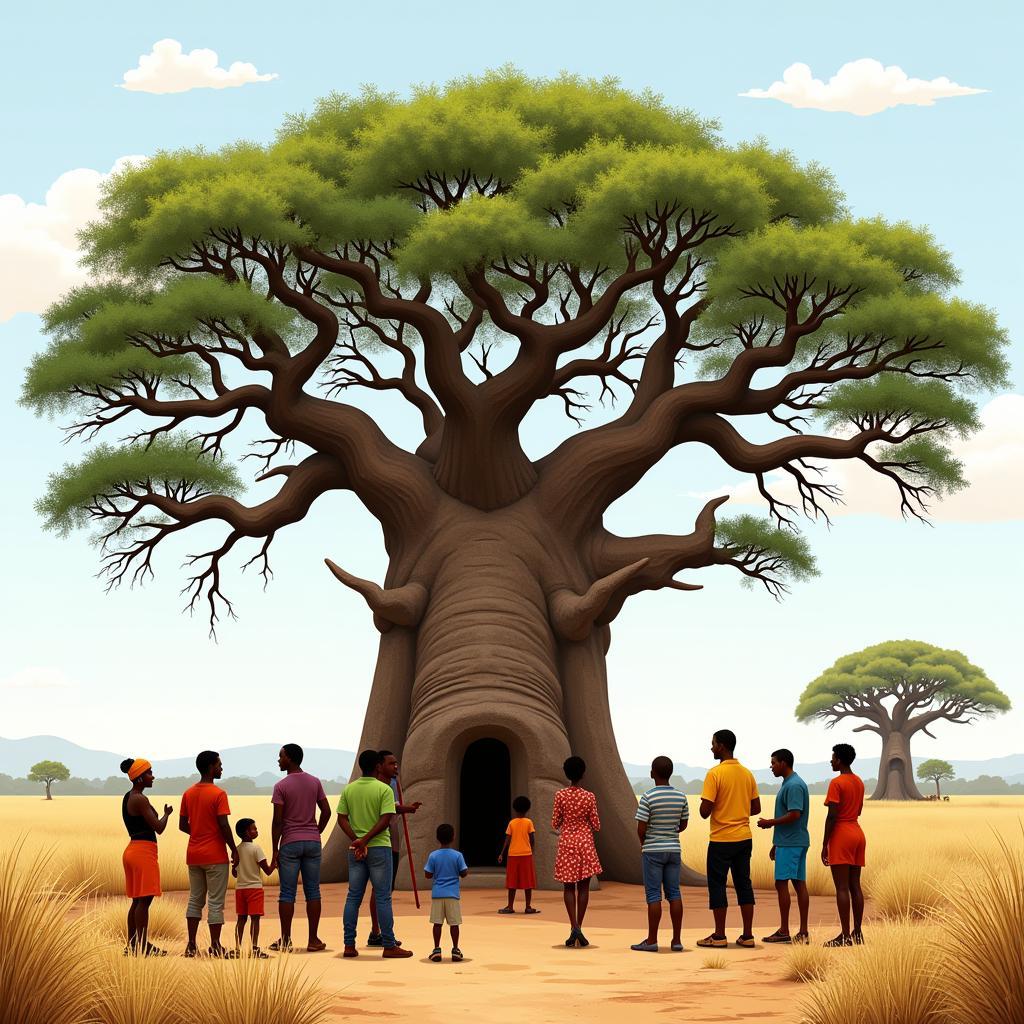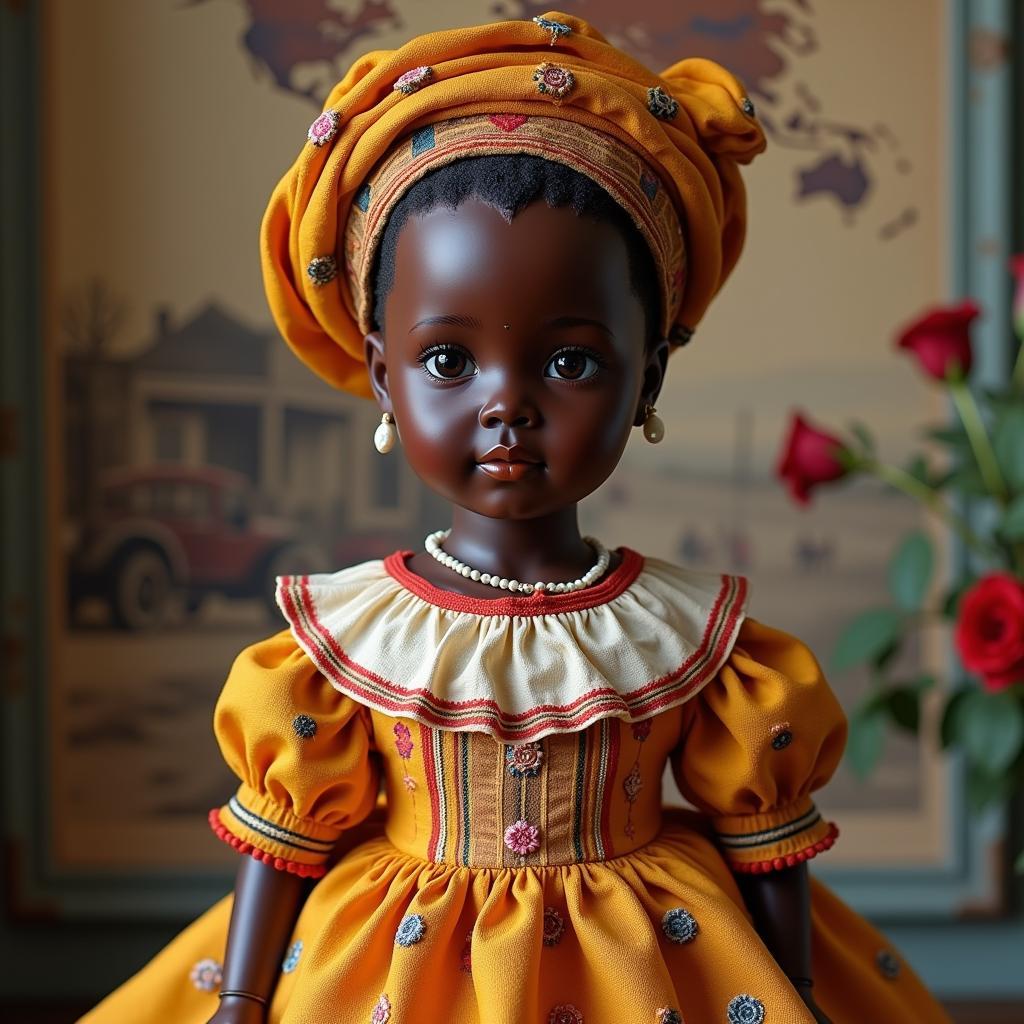Unlocking the Secrets of the African Baobab Tree
The African baobab tree, a true icon of the African savanna, holds a captivating blend of myth, legend, and practical uses. From its remarkable lifespan to its diverse applications in daily life, the baobab (Adansonia digitata) is a testament to nature’s ingenuity. This article delves deep into the fascinating world of the baobab, exploring its cultural significance, ecological importance, and remarkable properties.
The Baobab: A Colossus of the African Landscape
The baobab’s imposing stature is one of its most striking features. These majestic trees can reach heights of up to 25 meters and boast trunk diameters exceeding 10 meters. Their unique, swollen trunks act as massive water reservoirs, enabling them to survive harsh droughts. The baobab’s longevity is also legendary, with some individuals estimated to be over 2,000 years old, silently witnessing centuries of African history unfold beneath their branches.
The baobab has deep cultural roots in many African societies. Across the continent, it is often revered as a symbol of life, resilience, and community. In some cultures, it is believed to be the dwelling place of spirits, while others consider it a sacred gathering place for important ceremonies.
The Baobab’s Bounty: From Fruit to Fiber
Every part of the African baobab tree, from its roots to its leaves, offers valuable resources. The baobab fruit, known as “monkey bread,” is rich in vitamin C, antioxidants, and essential minerals. It’s consumed fresh, dried into a powder, or used to create refreshing drinks and nutritious porridges. The leaves are often cooked and eaten as a vegetable, providing a valuable source of vitamins and minerals in local diets. The bark is used to make rope, baskets, and even clothing, demonstrating the resourcefulness of communities living in harmony with the baobab.
What is the baobab fruit used for? It’s a nutritional powerhouse, used in everything from juices and smoothies to jams and porridges.
Protecting the Giants: Conservation Efforts for the African Baobab
While the baobab is generally resilient, it faces increasing threats from climate change, deforestation, and unsustainable harvesting practices. Efforts are underway to protect these ancient giants, including promoting sustainable harvesting methods, establishing protected areas, and raising awareness about the importance of baobab conservation. Supporting local communities in their sustainable management of baobab resources is crucial for ensuring the long-term survival of these remarkable trees.
Dr. Fatima Mohamoud, a renowned botanist specializing in African flora, emphasizes the importance of community involvement: “The baobab is not just a tree; it’s a lifeline for many communities. Protecting it requires empowering local people to manage its resources sustainably.”
The Baobab in Modern Times: A Global Commodity
The baobab’s nutritional and medicinal properties have caught the attention of the global market. Baobab powder is now a popular superfood, incorporated into various health products. This increased demand presents both opportunities and challenges. While it can provide economic benefits to local communities, it also raises concerns about sustainable harvesting and fair trade practices.
What makes the baobab a superfood? Its high concentration of vitamins, antioxidants, and fiber contributes to its superfood status.
The Future of the African Baobab Tree
The African baobab tree remains a vital part of the African landscape and culture.  African baobab tree as a central point for community gatherings Ensuring its future requires a collaborative approach, involving local communities, conservationists, and policymakers. By working together, we can safeguard these magnificent trees for generations to come.
African baobab tree as a central point for community gatherings Ensuring its future requires a collaborative approach, involving local communities, conservationists, and policymakers. By working together, we can safeguard these magnificent trees for generations to come.
In conclusion, the African baobab tree is much more than just a tree; it’s a symbol of resilience, a source of sustenance, and a cornerstone of African culture. By understanding its importance and supporting sustainable practices, we can contribute to the preservation of this iconic species.
FAQ
- How long does a baobab tree live? Some baobabs are estimated to be over 2,000 years old.
- What are the uses of the baobab fruit? It’s eaten fresh, dried into powder, and used in drinks and porridges.
- Is the baobab tree endangered? While not globally endangered, it faces threats from climate change and deforestation.
- What is baobab powder good for? It’s rich in vitamin C, antioxidants, and fiber.
- Where can I find baobab trees? Primarily in sub-Saharan Africa.
- Why is the baobab tree called the tree of life? Because it provides so many essential resources to people and animals.
- What does the baobab tree symbolize? Life, resilience, and community.
Common Scenarios
- Scenario: You’re interested in incorporating baobab powder into your diet. Question: How can I use baobab powder in my daily meals?
- Scenario: You’re planning a trip to Africa and want to see baobab trees. Question: Where are the best places to see baobab trees in their natural habitat?
- Scenario: You’re curious about the cultural significance of the baobab tree. Question: What role does the baobab play in African folklore and traditions?
Further Exploration
Explore more about the diverse flora and fauna of Africa on our website. Learn about other iconic African trees or delve deeper into the cultural significance of the baobab in different African communities.
Need more information? Contact us at +255768904061, email [email protected] or visit us at Mbarali DC Mawindi, Kangaga, Tanzania. Our customer service team is available 24/7.
